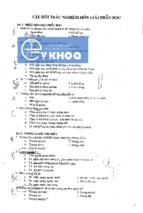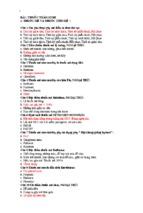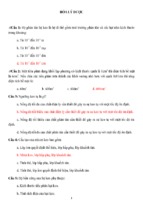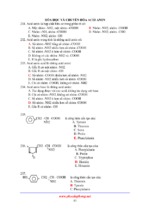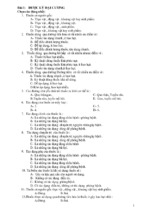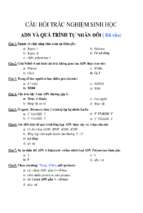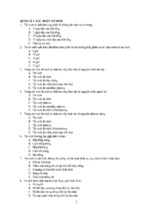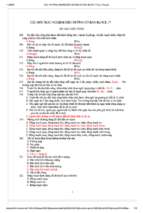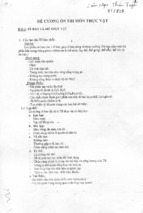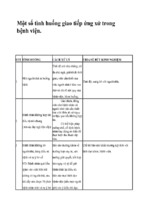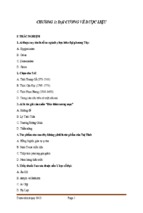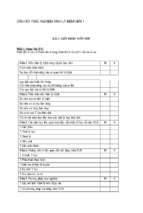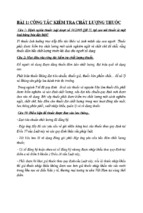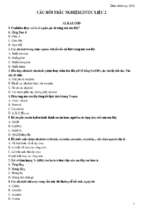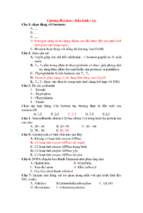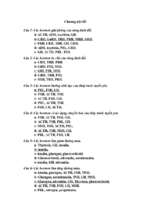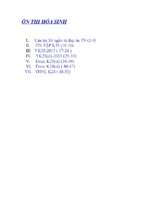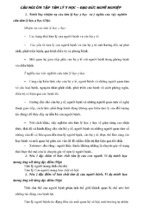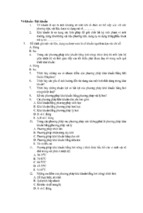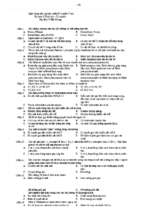This page intentionally left blank
Quick Medical
Terminology
A Self-Teaching Guide
5th Edition
Shirley Soltesz Steiner, R.N., M.S.
Natalie Pate Capps, M.N.Sc., R.N.
John Wiley & Sons, Inc.
This book is printed on acid-free paper. ࠗ
ϱ
Copyright © 2003 by Shirley Steiner. Copyright © 2011 by Shirley Steiner and Natalie Capps.
All rights reserved
Published by John Wiley & Sons, Inc., Hoboken, New Jersey
Published simultaneously in Canada
No part of this publication may be reproduced, stored in a retrieval system, or transmitted in
any form or by any means, electronic, mechanical, photocopying, recording, scanning, or
otherwise, except as permitted under Section 107 or 108 of the 1976 United States Copyright Act, without either the prior written permission of the Publisher, or authorization
through payment of the appropriate per-copy fee to the Copyright Clearance Center, 222
Rosewood Drive, Danvers, MA 01923, (978) 750-8400, fax (978) 646-8600, or on the web
at www.copyright.com. Requests to the Publisher for permission should be addressed to the
Permissions Department, John Wiley & Sons, Inc., 111 River Street, Hoboken, NJ 07030,
(201) 748-6011, fax (201) 748-6008, or online at http:/www.wiley.com/go/permissions.
Limit of Liability/Disclaimer of Warranty: While the publisher and the author have used their
best efforts in preparing this book, they make no representations or warranties with respect to
the accuracy or completeness of the contents of this book and specifically disclaim any
implied warranties of merchantability or fitness for a particular purpose. No warranty may be
created or extended by sales representatives or written sales materials. The advice and strategies contained herein may not be suitable for your situation. You should consult with a professional where appropriate. Neither the publisher nor the author shall be liable for any loss
of profit or any other commercial damages, including but not limited to special, incidental,
consequential, or other damages.
For general information about our other products and services, please contact our Customer
Care Department within the United States at (800) 762-2974, outside the United States at
(317) 572-3993 or fax (317) 572-4002.
Wiley also publishes its books in a variety of electronic formats and by print-on-demand.
Some content that appears in standard print versions of this book may not be available in other
formats. For more information about Wiley products, visit our website at www.wiley.com.
ISBN 978-0-470-88619-9 (paper); ISBN 978-1-118-06373-6 (ebk);
ISBN 978-1-118-06374-3 (ebk); ISBN 978-1-118-06375-0 (ebk)
Printed in the United States of America
10
9
8
7
6
5
4
3
2
1
For
Dorothy Elizabeth Wilson Soltesz, who is my mom and best friend.
Mildred Hall, who is my godmother and may not know how much she influenced
my growing-up years. Mildred assured me I had what it takes to go to college,
get an education, and create a better life.
— S. S.
For
My perfect mate, Barry, and remarkable children, Harden, Pate, and Jacqueline Capps
My parents and sisters, who shaped me:
Susie Ashworth, Nick Pate, Amy Bean, and Molly Pate
With affection, gratitude, and adoration for you all.
—N. C.
This page intentionally left blank
Contents
To the Reader
vii
Objectives of the Program
xi
Pronunciation Key
xiii
The Word-Building Strategy
xv
List of Illustrations
xxi
1
Basic Word Roots and Common Suffixes
1
2
More Word Roots, Suffixes, and Prefixes
21
3
Basic Anatomical Terms and Abnormal Conditions
43
4
The Genitals and the Urinary Tract
65
5
The Gastrointestinal Tract
93
6
The Heart
113
7
Symptoms, Diagnoses, Treatments, Communication,
Qualifiers, and Statistics
137
8
Growth and Development, and Body Orientation
169
9
Gynecology, Pregnancy, and Childbirth
195
10
The Eye
223
11
The Respiratory Tract
237
Review by Body System Assessment
253
Review Sheets by Chapter
261
Final Self-Test I
291
Final Self-Test II
294
v
vi
CONTENTS
Appendix A: Medical Abbreviations
297
Appendix B: Forming Plurals
303
Appendix C: Medical Measurements
306
Index of Words and Word Parts
307
To the Reader
What This Book Is and Who It’s For
So you want to learn the language of medicine. Great! Everything you need for
learning medical terminology is right in your hands. The language of medicine is
precise and technically oriented. It is among the great tools of the mind for better
understanding and more accurate communication between all practitioners of the
life sciences. Learning this special language is your opportunity to be among
them. Quick Medical Terminology can prepare you for a new job or even a new career
in one of the nation’s fastest growing job markets, health care and allied health
services.
In Quick Medical Terminology you’ll learn to pronounce, spell, and define medical terms used in today’s health care settings. You will use a word-building strategy that helps you discover connections and relationships among word roots,
prefixes, and suffixes. You’ll learn the meaning of each part of a complex medical
term and be able to put the parts together and define the term. Very quickly you’ll
develop a large repertoire of useful medical terms, much greater than the 500-plus
terms presented in this text.
Beginning with Chapter 4, most of the medical terms in each chapter will
focus on a particular part of the body. Grouping related terms in this way will help
you learn them better. However, the order of the chapters should not be confused
with the order of a standard head-to-toe medical evaluation. At the end of the
book, there is a Review by Body System Assessment that will walk you through
the standard head-to-toe examination medical professionals typically follow. This
review will bring together the medical terminology you will learn in the rest of
the book.
Quick Medical Terminology is an enjoyable way to learn the very special language
of medicine by yourself, at your own pace. If you speak and understand English
and have a high school education or equivalent, you’ll quickly learn the basics and
much more.
How to Use This Program
We suggest you use the following steps to approach your learning.
vii
viii
QUICK MEDICAL TERMINOLOGY
Step 1. Pre- and Post-Testing
If it’s worth learning, isn’t it worth knowing you have succeeded? You will find
two Final Self-Tests in the back of your guide. We suggest you take one test before
you begin your study and take another after you have completed all your lessons.
Pre- and post-testing shows you how much you have learned. Either one of the
final tests may be used first.
Step 2. Self-Instructional Chapter
This self-teaching guide lets you proceed at a pace that is right for you. It provides
everything you need to complete each of the eleven instructional chapters, which
include:
Introduction and Mini-Glossary. The first page of each chapter introduces you to
what you will cover and provides a Mini-Glossary of the terms and word parts
you’ll be learning. You may want to refer to it as you proceed through the lesson.
Numbered frames. Numbered frames are the building blocks of each chapter. A
frame presents a small amount of information and expects you to read and think
about that information. Then it asks you to respond to it.
The way you respond may be:
• to select a medical term or definition from a list of suggested answers.
• to write a medical term for a given definition.
• to draw a conclusion and write it in your own words.
Example
Emesis is a term that means vomiting. A term that means excessive vomiting is
hyperemesis. Underline the part of the medical term meaning excessive.
A gallbladder attack can cause excessive vomiting. Write the term that describes this
unpleasant condition.
Example
Myelo / dysplasia means defective development of the spinal cord.
Chondro means cartilage. What does chondro / dysplasia mean?
Answers. As you work through the chapter, you’ll find the correct answers on the
left-hand side of the page. It’s a good idea to use a folded piece of paper to cover
the answer until you give your own. Your answer will be correct most of the time,
but when your answer doesn’t match ours, be sure you know why it doesn’t. You
may need to go back and review a few frames before continuing.
Pronunciation Guide. When you work with a medical term for the first time, the
answer column guides your pronunciation of the new term. Take the opportunity
To the Reader
ix
to practice pronouncing each new term correctly several times. Say it aloud or
subverbally (saying it to yourself ).
Example
chondrodysplasia (konЈdro dis plazhe)
Review Exercises. Some chapters are longer than others, so to help you plan your
breaks, we designed several short learning sequences into each chapter. A brief
Review Exercise occurs at the end of a learning sequence. If you need a break,
stop after a Review Exercise. Proceed at a pace that is right for you. We urge you
to complete an entire chapter before calling it a day.
Summary Exercise. Each of the eleven instructional chapters ends with a Summary
Exercise. This final exercise pulls together all the new terms you worked with in
the chapter. Using the pronunciation guide alongside each term in the list, take
the opportunity to practice pronouncing each term correctly and defining it aloud
or subverbally. It really works! You might ask a friend to pronounce each term in
the list so you can practice spelling it when you hear it.
[This is a good classroom exercise for instructor-guided spelling practice, pronunciation practice, and defining the terms.]
Chapter Self-Test. Each chapter ends with a Self-Test in two parts. Part 1 asks you
to match a list of definitions with the correct medical terms. Part 2 asks you to
construct the correct medical term for each definition listed. All terms and definitions are covered in the instructional chapter you have just completed. Here’s
another opportunity to see how you’re doing.
Step 3. Chapter Review Sheet
Beginning on page 261, you’ll find a two-part Review Sheet for each of the
eleven chapters of instruction that make up this self-teaching program. We suggest
you begin every new chapter (beginning with Chapter 2) by completing a Review
Sheet for the previous chapter. These exercises are an important part of the learning program and will help you recall and practice the terms and definitions of the
preceding chapter before you begin the next one.
Part 1: Given a term, or word part, write the meaning.
Part 2: Given the definition of a term, write the correct term.
Correct answers are provided.
You may use these Review Sheets anytime, and as often as you wish. We suggest
you make several photocopies of each Review Sheet and use them at any time to
practice what you’ve already covered. There is never enough practice.
This page intentionally left blank
Objectives of the Program
When you have finished Quick Medical Terminology, you will have formed well over
500 medical terms using our word-building strategy combining prefixes, suffixes,
and word roots to create complex medical terms.
1. You will learn to understand medical terms by breaking them into their component parts and learning the meaning of the parts.
2. You will learn to construct medical terms from component parts to express
given definitions.
3. You will learn to pronounce, spell, and define medical terms used in this book.
4. You will be able to apply this word-building strategy to terms covered in
this book and other terms you will come across as you work in a health care
setting.
xi
This page intentionally left blank
Pronunciation Key
The primary stress mark () is placed after the syllable bearing the heavier stress or
accent; the secondary stress mark (Ј) follows a syllable having a somewhat lighter
stress, as in comиmenиdaиtion (kom ‰nиdaЈ sh‰n).
¯
a
a
¯
air
ä
b
ch
d
e
e
¯
f
g
h
i
ı
¯
j
k
l
add, map
ace, rate
care, air
palm, father
bat, rub
check, catch
dog, rod
end, pet
even, tree
fit, half
go, log
hope, hate
it, give
ice, write
joy, ledge
cool, take
look, rule
m
n
ng
o
o
¯
ô
oi
ou
oo
¯
¯
oo
p
r
s
sh
t
th
th
move, seem
nice, tin
ring, song
odd, hot
open, so
order, jaw
oil, boy
out, now
pool, food
took, full
pit, stop
run, poor
see, pass
sure, rush
talk, sit
thin, both
this, bathe
u
er
y¯¯
oo
v
w
y
z
zh
‰
up, done
urn, term
use, few
vain, eve
win, away
yet, yearn
zest, muse
vision, pleasure
the schwa, an
unstressed vowel
representing the
sound spelled
a in above
e in sicken
i in clarity
o in melon
u in focus
Source: Slightly modified “Pronunciation Key” in Funk & Wagnalls Standard College Dictionary.
Copyright © 1977 by Harper & Row, Publishers, Inc. Reprinted by permission of the publisher.
The schwa (‰) varies widely in quality from a sound close to the (u) in up to a sound close to
the (i) in it as heard in pronunciations of such words as ballot, custom, landed, horses.
The (r) in final position as in star (stär) and before a consonant as in heart (härt) is regularly
indicated in the respellings, but pronunciations without (r) are unquestionably reputable. Standard
British is much like the speech of Eastern New England and the Lower South in this feature.
In a few words, such as button (butn) and sudden (sudn), no vowel appears in the unstressed
syllable because the (n) constitutes the whole syllable.
xiii
This page intentionally left blank
The Word-Building Strategy
Quick Medical Terminology teaches you a strategy for word-building. The vocabulary of medicine is large and complex, but you can learn much of it by breaking
down a complex term into its meaningful parts and putting together a word from
those meaningful parts. Cover the column on the left and check your answers
when you are done. Let’s begin.
1.
All words have a word root. The root is the base or the foundation
of the word, regardless of what other word, unit, or syllable may be
attached to it.
For example: do is the root of undo and doing.
What is the root of import, export, transport, and support?
port
root
2.
In this example, the words suffix, prefix, affix, and fixation have fix
as their
.
3.
What is the root in tonsill/itis, tonsill/ectomy, and tonsill/ar?
tonsil
4.
Two or more words may be combined to form a meaningful compound word. Using two or more of the following words, create
some meaningful compound words:
Some suggestions:
overhang
overcome
understand
grandstand
outcome,
etc.
over
hang
under
grand
stand
wear
come
out
xv
xvi
QUICK MEDICAL TERMINOLOGY
yes
Two words are
combined to make
a meaningful
compound term.
micr
tel
micr/o
tel/e
phon/o/graph
gastr/o/enteric
laryng/o/spasm
a word root plus
a vowel (a, e, i, o, u)
5.
Is teaspoon a compound word?
Explain your answer.
6.
A word root and a whole word may form a compound word. But
the root must be in its combining form. The root plus a vowel (a, e, i,
o, u) make the combining form. Here are two compound terms,
micr/o/scope and tel/e/cast.
What are the word roots?
What are the combining forms?
7.
Underline the combining form in each of the following words:
phon/o/graph
laryng/o/spasm
gastr/o/enter/ic
8.
The combining form in compound words is made up of a
plus a
.
9.
In tel/e/graph and tel/e/phone the root plus a vowel are necessary
to make these compound words. What is this special form called?
a combining form
10.
Compound terms may be composed of which of the following?
a) two or more whole words
b) a whole word and a word root
c) a word root combining form and a word
all three
Your answer?
combining form
11.
Two roots may join together but one of them will be in a special
form called the
.
The Word-Building Strategy
xvii
12.
What kind of words are these: microfilm and telecommunication?
compound terms
a combining form
(a root plus a vowel)
a whole word
micr/o
-ic
micr-
What word parts are these terms made of ?
13.
Many medical terms are made of a combining form, a word root,
and an ending. In the term micr/o/scop/ic,
the combining form is
,
scop-
the ending is
,
the root is
.
Is there another word root?
What might it be?
vowel
14.
There are two word roots in micr/o/scop/ic. The root micr is in the
combining form because it is attached to a word that begins with a
consonant. There is no need to add a vowel to the root scop because
the ending -ic begins with a
.
electrostatic
15.
Build a term from the combining form electr/o, the word root stat,
and the ending -ic.
/
/
/
word root
word
ending
ending
16.
In the word hydroelectric,
electr is the
hydro is the
-ic is the
,
,
.
17.
Endings change the basic meaning of a root or foundation word.
Examine the following sentences:
Joe’s job was blast-ing the rocks.
Tejo was blast-ed by the cannon.
The meaning of blast is changed by its
.
xviii
QUICK MEDICAL TERMINOLOGY
yes
The endings added to
the root changed its
meaning.
porter
one who carries
18.
A suffix is a word unit or syllable added to the end of a word or root
that alters its meaning and creates a new word. In the words
plant/er, plant/ed, and plant/ing, are these endings also suffixes?
Explain your answer.
19.
You can change the meaning of a word (or root) by adding a suffix.
The suffix -er means one who. The word port means to carry. Add the
suffix to the word root, write the word, and explain what it means.
suffix
20.
When -able is added to the end of read it forms the new word readable. -Able is a meaningful unit added to the end of a word, creating
a new word. So -able is a
.
im-, sup-,
trans-
21.
A prefix is a meaningful unit joined to the beginning of a word or
root that creates a new term. In the words im/plant, sup/plant, and
trans/plant, the prefixes are
,
, and
.
prefix
22.
In the word dis/please, dis- is a meaningful unit that comes before
the word and changes the meaning of please; dis- is a
.
23.
Meaningful units that go in front of a root are called prefixes.
Meaningful units placed after a root are called suffixes.
Label the units in this word:
un-
manage
-able
prefix root suffix
meaning
word
24.
A suffix or a prefix is called a meaningful unit because when it is
attached or added to a root or word it changes the
of the
.
- Xem thêm -

